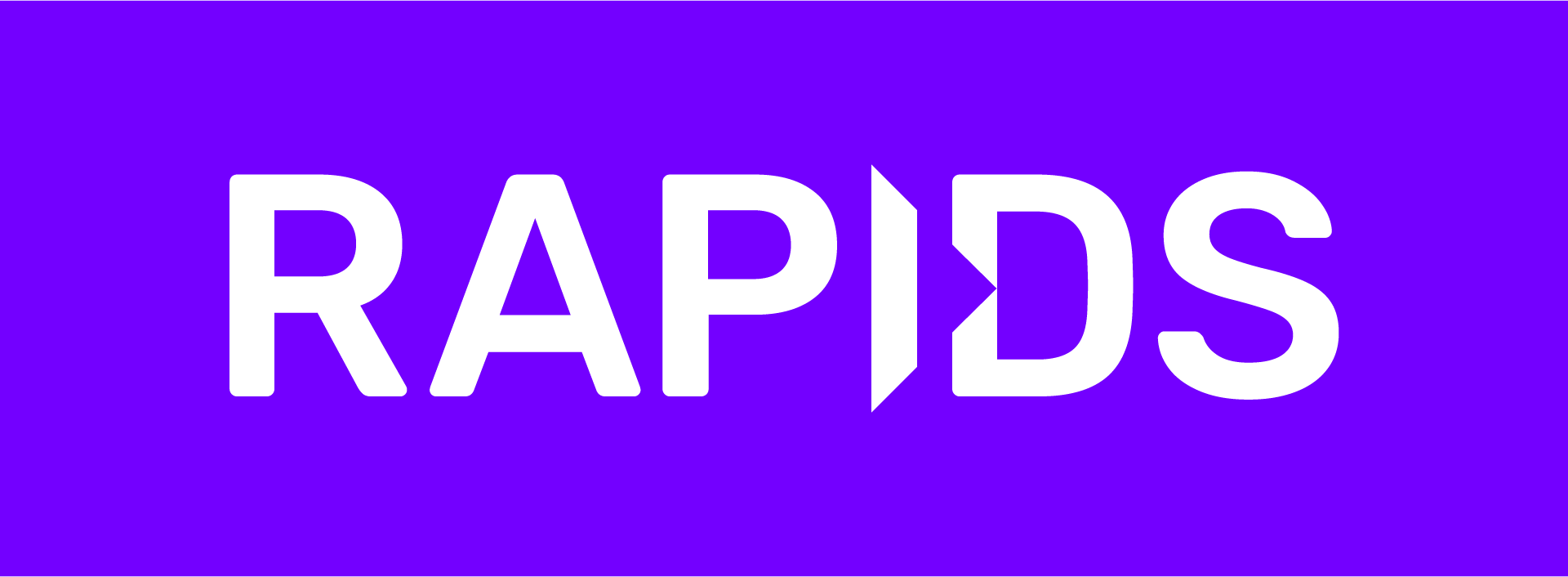Note
cuProj is a new RAPIDS library housed within the cuSpatial repo that provides GPU-accelerated transformations of coordinates between coordinate reference systems (CRS). cuProj is available as of release 23.10 with support for transformations of WGS84 coordinates to and from Universal Transverse Mercator (UTM) 🌐.
To learn more about cuProj, see the Python cuProj README or the c++ libcuproj README.
- cuSpatial User's Guide: Python API reference and guides
- cuSpatial Developer Documentation: Understand cuSpatial's architecture
- Getting Started: Installation options for cuSpatial
- cuSpatial Community: Get help, collaborate, and ask the team questions
- cuSpatial Issues: Request a feature/documentation or report a bug
cuSpatial accelerates vector geospatial operations through GPU parallelization. As part of the RAPIDS libraries, cuSpatial is inherently connected to cuDF, cuML, and cuGraph, enabling GPU acceleration across entire workflows.
cuSpatial represents data in GeoArrow format, which enables compatibility with the Apache Arrow ecosystem.
cuSpatial's Python API is closely matched to GeoPandas and data can seamlessly transition between the two:
import geopandas
from shapely.geometry import Polygon
import cuspatial
p1 = Polygon([(0, 0), (1, 0), (1, 1)])
p2 = Polygon([(0, 0), (1, 0), (1, 1), (0, 1)])
geoseries = geopandas.GeoSeries([p1, p2])
cuspatial_geoseries = cuspatial.from_geopandas(geoseries)
print(cuspatial_geoseries)Output:
0 POLYGON ((0 0, 1 0, 1 1, 0 0))
1 POLYGON ((0 0, 1 0, 1 1, 0 1, 0 0))
For additional examples, browse the complete API documentation, or check out more detailed notebooks. the NYC Taxi and Weather notebooks make use of cuSpatial.
cuSpatial is constantly working on new features! Check out the epics for a high-level view of our development, or the roadmap for the details!
- Spatial relationship queries (DE-9IM)
- Linestring-Linestring Intersections
- Cartesian distance between any two geometries (ST_Distance)
- Haversine distance
- Hausdorff distance
- Spatial window filtering
- Quadtree indexing
- Spatial joins
- Quadtree-based point-in-polygon
- Quadtree-based point-to-nearest-linestring
- Deriving trajectories from point location data
- Computing distance/speed of trajectories
- Computing spatial bounding boxes of trajectories
Thanks to the from_geopandas and to_geopandas functions you can accelerate what cuSpatial supports, and leave the rest of the workflow in place.
---
title: Integrating into Existing Workflows
---
%%{init: { 'logLevel': 'debug', 'theme': 'base', 'gitGraph': {'showBranches': false},
'themeVariables': {'commitLabelColor': '#000000',
'commitLabelBackground': '#ffffff',
'commitLabelFontSize': '14px'}} }%%
gitGraph
commit id: "Existing Workflow Start"
commit id: "GeoPandas IO"
commit id: "Geospatial Analytics"
branch a
checkout a
commit id: "from_geopandas"
commit id: "cuSpatial GPU Acceleration"
branch b
checkout b
commit id: "cuDF"
commit id: "cuML"
commit id: "cuGraph"
checkout a
merge b
commit id: "to_geopandas"
checkout main
merge a
commit id: "Continue Work"
CUDA/GPU requirements
- CUDA 11.2+ with a compatible, supported driver
- Linux native: Pascal architecture or newer (Compute Capability >=6.0)
- WSL2: Volta architecture or newer (Compute Capability >=7.0)
Use the RAPIDS Release Selector, selecting Docker as the installation method. All RAPIDS Docker images contain cuSpatial.
An example command from the Release Selector:
docker run --gpus all --pull always --rm -it \
--shm-size=1g --ulimit memlock=-1 --ulimit stack=67108864 \
-p 8888:8888 -p 8787:8787 -p 8786:8786 \
nvcr.io/nvidia/rapidsai/notebooks:24.06-cuda11.8-py3.10To install via conda:
Note cuSpatial is supported only on Linux or through WSL, and with Python versions 3.9, 3.10, and 3.11.
cuSpatial can be installed with conda (miniconda, or the full Anaconda distribution) from the rapidsai channel:
conda install -c rapidsai -c conda-forge -c nvidia \
cuspatial=24.06 python=3.11 cudatoolkit=11.8We also provide nightly Conda packages built from the HEAD of our latest development branch.
See the RAPIDS installation documentation for more OS and version info.
To install via pip:
Note cuSpatial is supported only on Linux or through WSL, and with Python versions 3.9, 3.10, and 3.11.
The cuSpatial pip packages can be installed from NVIDIA's PyPI index. pip installations require using the matching wheel to the system's installed CUDA toolkit.
- For CUDA 11 toolkits, install the
-cu11wheels - For CUDA 12 toolkits install the
-cu12wheels - If your installation has a CUDA 12 driver but a CUDA 11 toolkit, use the
-cu11wheels.
pip install cuspatial-cu12 --extra-index-url=https://pypi.nvidia.com
pip install cuspatial-cu11 --extra-index-url=https://pypi.nvidia.comcuSpatial depends on geopandas, which uses fiona >= 1.8.19, to read common GIS formats with GDAL.
Fiona requires GDAL is already present on your system, but its minimum required version may be newer than the version of GDAL in your OS's package manager.
Fiona checks the GDAL version at install time and fails with an error like this if a compatible version of GDAL isn't installed:
ERROR: GDAL >= 3.2 is required for fiona. Please upgrade GDAL.
There are two ways to fix this:
- Install a version of GDAL that meets fiona's minimum required version
- Ubuntu users can install a newer GDAL with the UbuntuGIS PPA:
sudo -y add-apt-repository ppa:ubuntugis/ppa sudo apt install libgdal-dev
- Pin fiona's version to a range that's compatible with your version of
libgdal-dev
- For Ubuntu20.04 (GDAL v3.0.4):
pip install --no-binary fiona --extra-index-url=https://pypi.nvidia.com cuspatial-cu12 'fiona>=1.8.19,<1.9' - For Ubuntu22.04 (GDAL v3.4.1):
pip install --no-binary fiona --extra-index-url=https://pypi.nvidia.com cuspatial-cu12 'fiona>=1.9'
To build and install cuSpatial from source please see the build documentation.
If you find cuSpatial useful in your published work, please consider citing the repository.
@misc{cuspatial:24.06,
author = {{NVIDIA Corporation}},
title = {cuSpatial: GPU-Accelerated Geospatial and Spatiotemporal Algorithms},
year = {2023},
publisher = {NVIDIA},
howpublished = {\url{https://github.com/rapidsai/cuspatial}},
note = {Software available from github.com},
}
